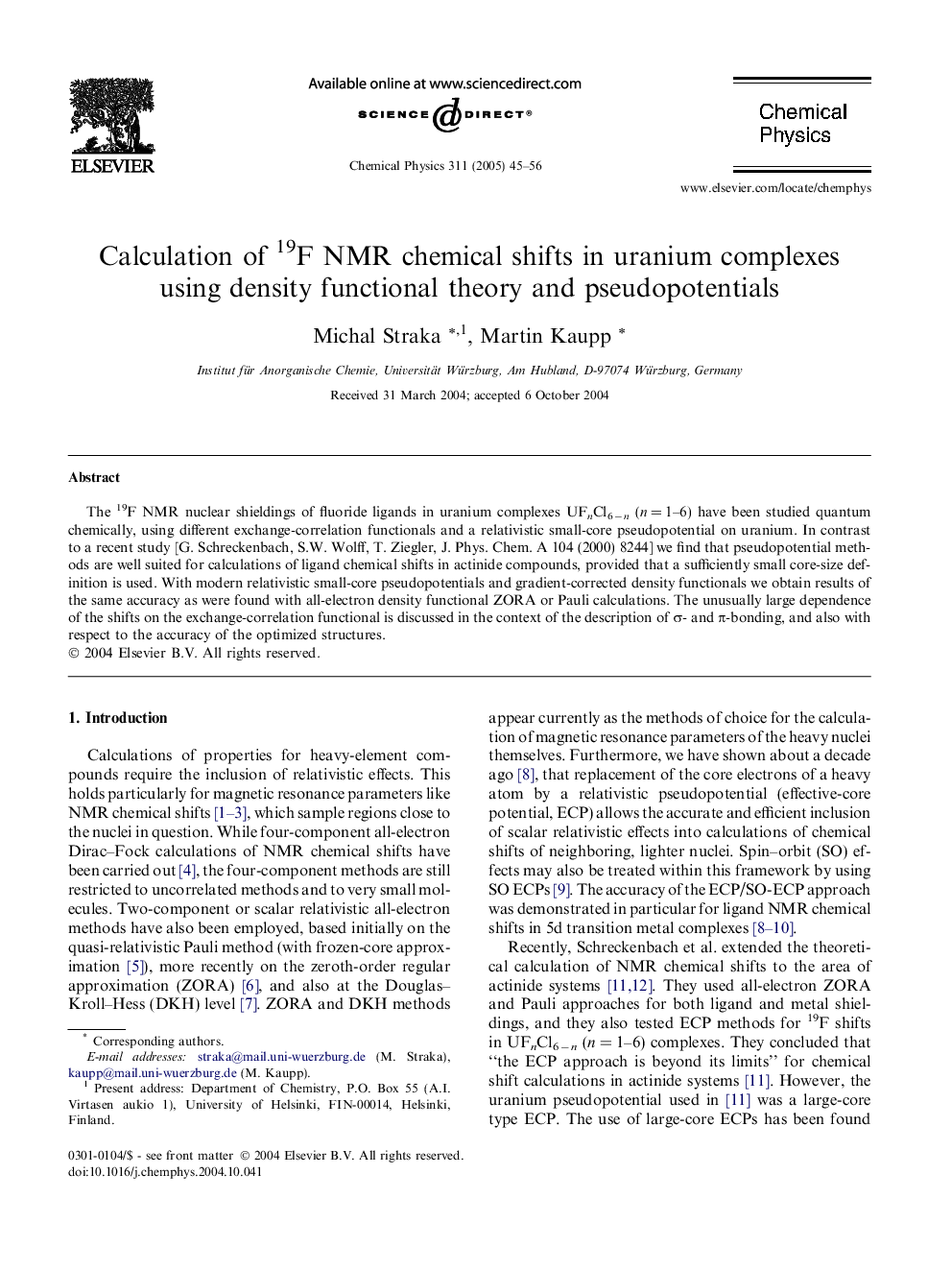| Article ID | Journal | Published Year | Pages | File Type |
|---|---|---|---|---|
| 9575405 | Chemical Physics | 2005 | 12 Pages |
Abstract
The 19F NMR nuclear shieldings of fluoride ligands in uranium complexes UFnCl6 â n (n = 1-6) have been studied quantum chemically, using different exchange-correlation functionals and a relativistic small-core pseudopotential on uranium. In contrast to a recent study [G. Schreckenbach, S.W. Wolff, T. Ziegler, J. Phys. Chem. A 104 (2000) 8244] we find that pseudopotential methods are well suited for calculations of ligand chemical shifts in actinide compounds, provided that a sufficiently small core-size definition is used. With modern relativistic small-core pseudopotentials and gradient-corrected density functionals we obtain results of the same accuracy as were found with all-electron density functional ZORA or Pauli calculations. The unusually large dependence of the shifts on the exchange-correlation functional is discussed in the context of the description of Ï- and Ï-bonding, and also with respect to the accuracy of the optimized structures.
Related Topics
Physical Sciences and Engineering
Chemistry
Physical and Theoretical Chemistry
Authors
Michal Straka, Martin Kaupp,
